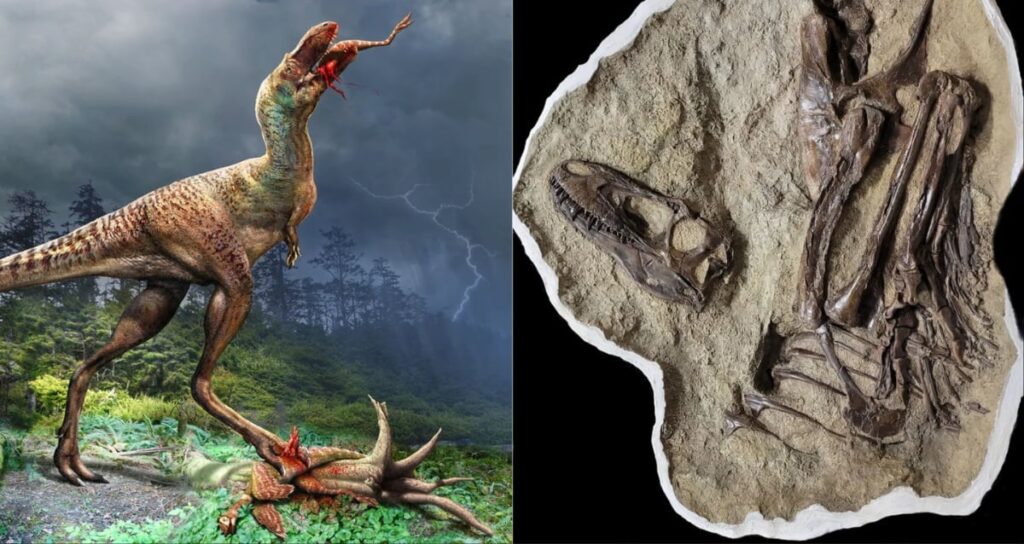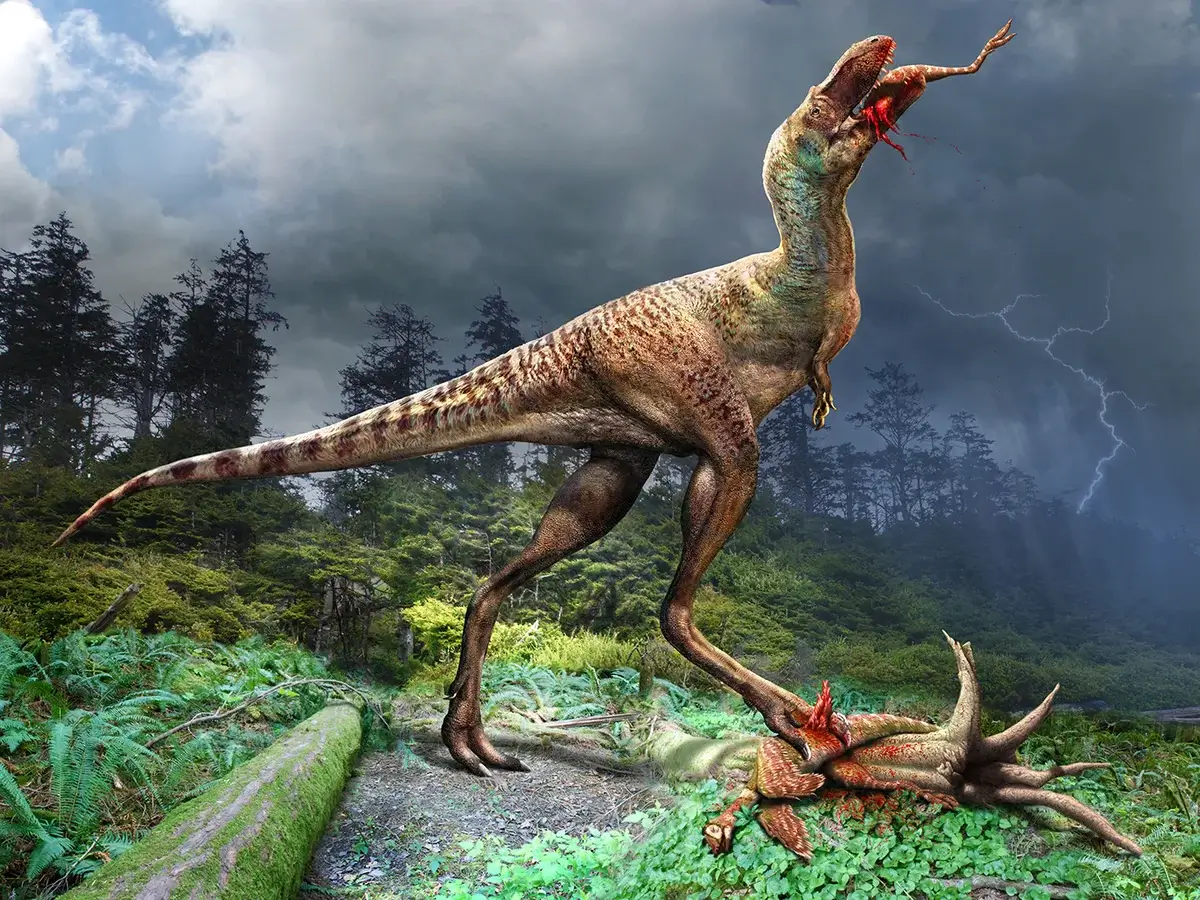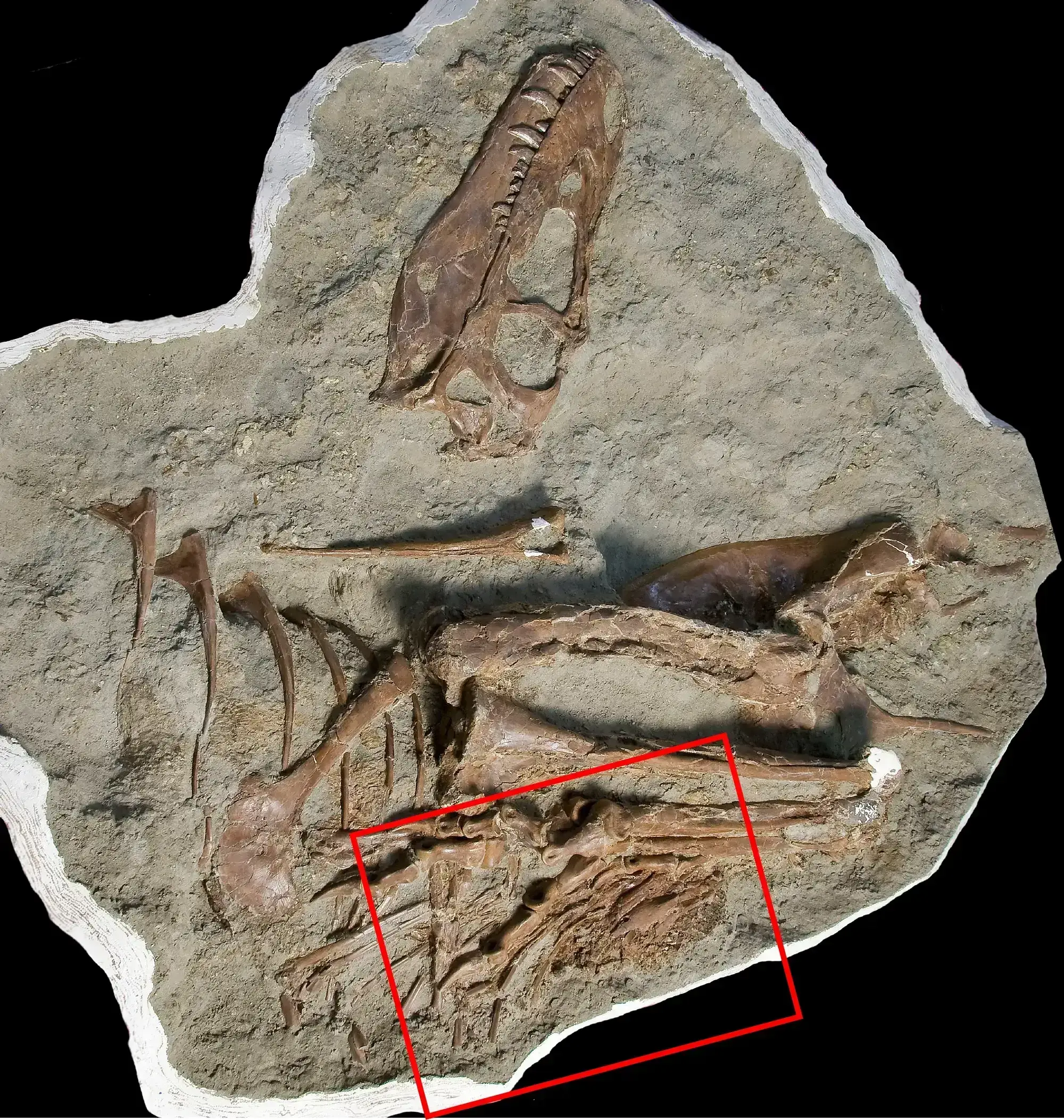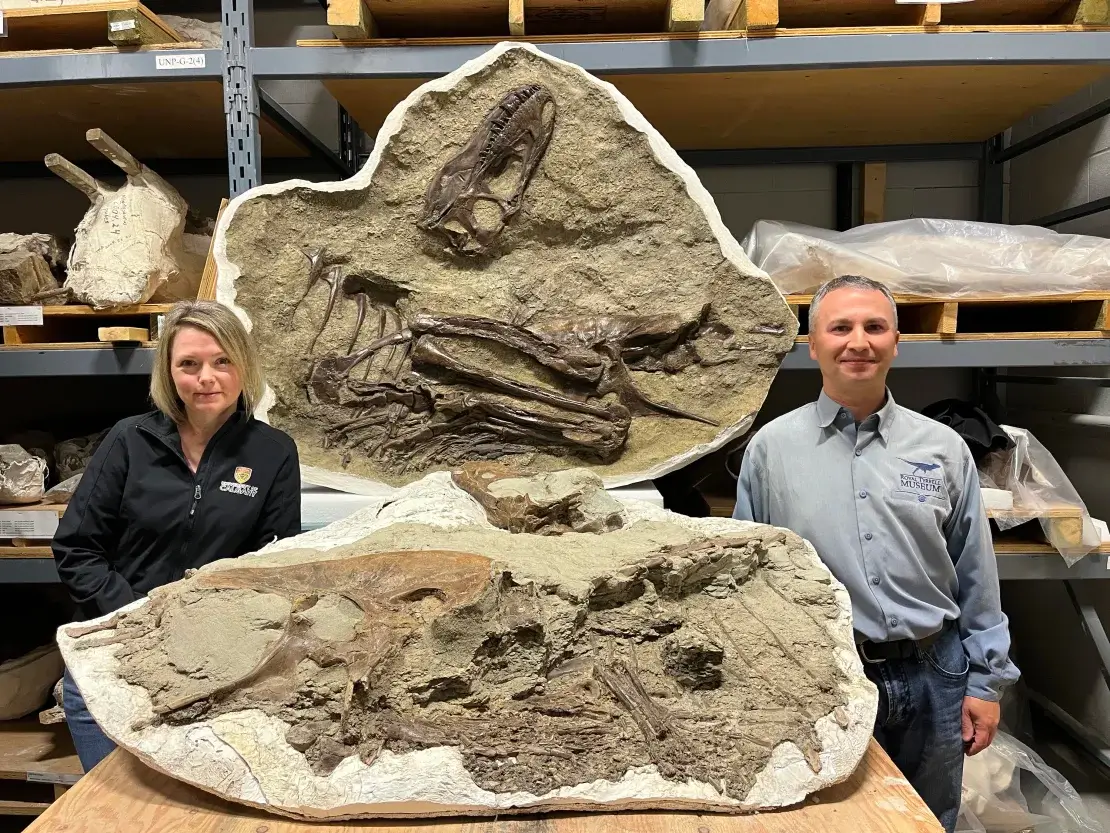
Scientists say this discovery has helped them confirm a long-held hypothesis that the Tyrannosaur’s dietary habits changed as it got older.

Royal Tyrrell Museum of PalaeontologyA rendering of the Gorgosaurus eating the Citipes.
A 75 million-year-old Tyrannosaur was found with its stomach contents still intact, in what researchers called a “once in a career” discovery
In 2009, staff from Alberta’s Royal Tyrrell Museum of Palaeontology were examining a newly discovered Gorgosaurus fossil when they noticed something poking out of its rib cage. The scientists soon realized that they were looking at tiny toe bones — and that the juvenile dinosaur’s last meal had been preserved in its stomach for tens of millions of years.
Now, an analysis of the Gorgosaurus’ stomach contents has revealed the meaty legs of a pair of small, bird-like dinosaurs, known as Citipes elegans. Researchers say this is the first Tyrannosaur ever found with its stomach contents preserved.
“It feels rather unfortunate for the Citipes, but lucky for us,” Dr. Darla Zelenitsky of the University of Calgary said in an interview with IFLScience.
Zelenitsky is one of the authors of a study detailing the findings, published in the journal Science Advances.

Royal Tyrrell Museum of PalaeontologyThe fossil was so well-preserved that scientists were able to see the remains of the Gorgosaurus’ last meal in situ.
The dinosaur likely died within a week of eating its last meal, but researchers were not able to determine its cause of death.
“It’s pretty clear what the cause of death of the small Citipes is,” said co-author Dr. François Therrien. “But as for the cause of death of the Gorgosaurus? We have no idea, but [it] probably did not die of indigestion.
“The carcass of the dinosaur was found at the bottom of a river channel deposit, but that doesn’t necessarily mean that it drowned in the river. It’s just that this is an ideal environment to be buried because rivers transport a lot of sediments.”
The juvenile Gorgosaurus, a slightly smaller cousin of the T. Rex, was likely five to seven years old, weighed about 738 pounds, and stretched about 13 feet long when it died — and it was far from full-grown.
What’s more, researchers said that the stomach contents of the Gorgosaurus suggest that young Tyrannosaurs had different eating habits and diets than adults did. Previous research suggests that adult Gorgosauruses, which could weigh about 2,200 pounds, hunted large herbivores, using their enormous skulls and “killer banana” teeth to slice into their prey’s bones.
Meanwhile, juveniles were speedy and agile and apparently hunted prey much smaller than themselves.
“This specimen from Alberta, which is preserved in the river environment, does give us a good snapshot of behavior in a Tyrannosaur dinosaur, and that’s its feeding behavior,” Zelenitsky said. “That it was this precision eater, a picky eater, and it was off chasing after small and swift prey like Citipes.”

Royal Tyrrell Museum of PalaeontologyFrancois Therrien (right) and Darla Zelenitsky (left) with the Gorgosaurus fossil.
The researchers plan to use their findings to expand their research on the eating habits of these dinosaurs, including how their eating habits change over time.
“Now we have evidence that the young Tyrannosaurs had a different diet from adults, we want to try to pinpoint if there are any other things we can say about it, like what type of prey did they feed upon, or at what exact timing did the diet change, and how,” said Therrien.
“The fact that Tyrannosaurs were capable of occupying different ecological niches throughout their lives was probably one of the factors that made them such successful animals.”